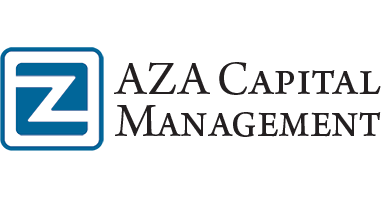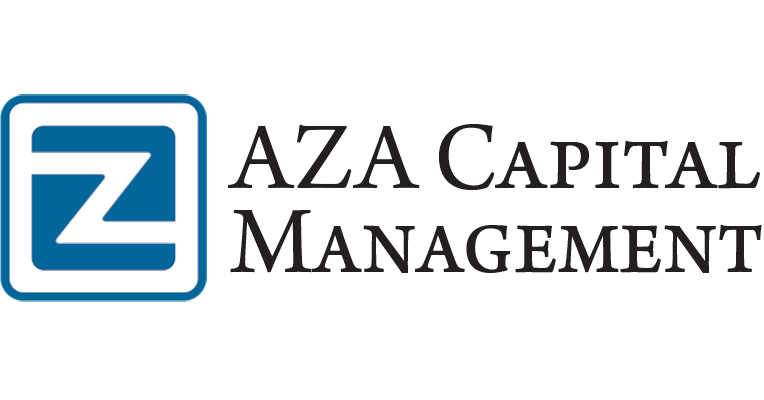As market valuations levitate near all-time highs based on price and multiples, we continue to beat the drum that growth matters. If the U.S. does not return to its 20th century levels of growth, the weighing machine of markets will find assets overvalued and a potentially severe bear market could ensue.

Currently, the U.S. economy is on life support via unprecedented fiscal and monetary support. Most of this assistance is coming through direct transfers to banks, corporations, and individuals.
Transfer payments can keep the patient alive, but funding approximately 50% of federal spending via direct Federal Reserve monetization could have its limits.
Long term investment – the type that yields a future return - may be the best tonic for real, sustainable growth that creates jobs and lays the foundation for economic strength. Below, we highlight a few areas for consideration.
Low GDP Growth Puzzle
This century the U.S. has lagged its potential for growth substantially. In The High Cost of High Prices and American School Blueprint for Growth, we noted that growth has been hampered by the Federal Reserve’s penchant for bailouts via low rates and asset purchases that hinder pricing and the efficiency of properly functioning markets.
Recently, Fed governors have stated that inflated asset markets prevented the loss of “millions” of jobs, but the data suggest that the Fed has also prevented millions of jobs from being created. Markets reward virtue and the highly disordered Fed often punishes the good actors.

Regulatory and trade policy headwinds have had significant effects on growth in manufacturing—the sector that offers significant opportunity for productivity gains, future innovation, and higher paying jobs. Additionally, these policies have had deleterious impacts on household formation pressuring family and population growth.
According to the World Economic Forum, investments in health, education, and infrastructure may provide the biggest avenues to improve growth and global competitiveness.
Low Hanging Fruit
The World Economic Forum (WEF) conducts a global survey on country competitiveness. The U.S is at the top of the list based on the quality and size of its markets and innovation ecosystem. Despite this, significant room for improvement to become wealthy, wise, and healthy remains.

Source: World Economic Forum, “Global Competitiveness Report 2019: How to end a lost decade of productivity growth”
On key global competitiveness measures of health, infrastructure, and human capital, the U.S. lags world leaders significantly. These areas provide low hanging fruit for macroprudential fiscal policy investments.
In healthy life expectancy, the U.S. places 55th out of 141 countries, while spending 18% of GDP on health care versus a circa 6% average for the world.
Beyond health, skills matter. For the future work force, the U.S. places 30th in school life expectancy or educational attainment. The WEF survey places the future workforce in the low teens based on multiple factors.
The U.S. also places in the low teens on the quality of its transport, power, and water utilities.
Another perceived weakness is macroeconomic stability that is hindered by high debt levels, a risk we believe is partially mitigated by being the sovereign issuer of the world’s reserve currency.
The U.S. was previously the world leader in educational attainment, infrastructure, and economic strength.
Why do we find the country in a diminished position? The answer has a lot to do with a lack of strategic, long-term investment.
Chronic Underinvestment
With the Nasdaq trading over 38x earnings, technology is driving U.S. market performance. But has the U.S. been making the proper investments to sustain perceived strength? For over a decade, the United States has been investing at levels consistent with the lows of major recessions.

Since these are gross investment numbers, low levels suggest that the country is consuming its capital stock and reducing its base for future growth. Given the growing backlog of needed infrastructure investment, it is clear we are eroding the economic foundations of the country.

High government investment in the 1950’s resulted in the U.S. possessing the most advanced infrastructure and highest educated workforce on the globe. In the 1950’s private investment averaged approximately 16% of GDP. From 1960 to 2007, private investment increased and averaged nearly 18% of GDP, almost a full 2% more per year. That is a huge difference!
Since 2008, private investment has almost reverted back to 16%. Those material and early public investments set the stage for sustained crowding in of private investment that propelled the U.S. economy for decades.

But we have failed to learn that lesson. Since 2000, public investment has averaged below 4% of GDP. From 1950 to 1970, public investment averaged 6.4% of GDP. Combined investment is a full 4.4% of GDP below post-World War II averages.
If the U.S. reverted to higher levels of investment, allocating over an additional 4% of GDP (over $800 billion) per year for a sustained period, the country could rebuild the foundation for future growth.
Keep in mind the Federal Reserve monetized c. $3.5 trillion of assets in a matter of months or over four years of added investment the U.S. could have productively added to the economy. Since 2008, the Fed increased its balance sheet by over $6 trillion, a number that would have funded a complete rebuilding of U.S. infrastructure, funded an expansion of educational attainment, and more.

Instead, debt levels have increased as investment has lagged, suggesting increases in debt have been directed to unproductive activities like stock buybacks and inflated consumption.
We are not alone in highlighting the need for investment that creates real wealth. Those making the case for added infrastructure investment include the American Society of Civil Engineers, the Council on Foreign Relations, and the Business Roundtable.
Tech and People are the Future
The nature of infrastructure and wealth is changing, and intellectual capital is a major part of the equation. Thus, investment needs to be considered in a broader context.
Intellectual Property as Indicator
The explosion in global patent grants is one indication that technical know-how is critical to future success and growth.

The U.S. was the undisputed global leader for patents until recently. But part of this can be explained by the size and openness of U.S. markets, a key strength for global competitiveness. On the flip side, the number of U.S. residents being granted patents has been declining on a relative basis for decades.

Any future investment ought to consider how to build out a physical and human based infrastructure with incentives to increase our home-grown abilities in science, technology, engineering, and mathematics (STEM).
Labor Force Gains-Increasing STEM Share Is the Next Stage
In the post-World War II period from 1945 to 2000, the United States experienced significant gains in educational attainment. At the end of WWII, only 5% of Americans held a bachelor’s or more advanced degree, while 20% of the population had a high school diploma or some college.
In 2019, over 90% of Americans had attained a high school diploma or higher level of education. It is nearly impossible for the country to replicate the 1950-2000 period.

According to the National Science Foundation, STEM-related jobs are growing at twice the rate of other disciplines and have proven more resilient in recessions.

Markets are demanding and rewarding more technically prepared workers. Based on data from over 3.5 million individuals and 4,000 schools PayScale.com yields insight into what disciplines the market is rewarding.
According to this database, 24 of the highest paying 25 majors are in STEM or math-related disciplines like accounting. Political Economy was the only non-math related degree in the top 25.
Top salary potential schools provide another example. The composition of STEM degrees awarded to graduates of the top salary potential schools is 52%--60% higher than the national average of 32%. Outside of the Ivies: Harvard, Princeton and Yale, the rest of the top 10 are institutions that index heavily on STEM training.

The need for technical skills extends to the heart of the American work force. A National Skills Coalition analysis shows over 50% of jobs require training beyond high school. Key training identified includes higher level skills in healthcare, medical technology, IT, software, plumbing, electricity, and advanced manufacturing.
Not everyone in the economy needs to be a tech worker, but these core production and innovation efforts create the need for the services surrounding their needs.
Markets are telling policy makers that more investment is needed in human capital. Perhaps hundreds of economists at the Federal Reserves could conceive of the highest return on investment activities as opposed to calculating the amount of QE needed for bailouts. When Chair Powell says that fiscal policy is good, he might then have a more insightful answer.
Health - Factor Costs Meet Productivity
Beyond investment in infrastructure, technology, and people, there is no other sector than health that offers dramatic return potential for the economy.
In terms of cost structure of industrial and service competitiveness, the U.S. spends more than any other country in absolute money and as a percent of GDP—600% of the world average and >200% of the OECD average.

The difference is in private spending on healthcare. The private sector in peer countries spend less than 20% of what the American private sector does. In other words, our private sector pays 400% more than competitors. How can that make us competitive?
Healthier people tend to be more productive. How healthy is our labor force?

WHO World Health Statistics show that U.S. does an excellent job across a broad range of health metrics though several indicators on health should be alarming for the U.S.
Healthy life expectancy at birth lags other industrialized countries by 3 to 5 years. Maternal mortality and adolescent birth rates are more than double that of Western European countries. According to The Commonwealth Fund, the U.S. has the highest chronic disease burden of any OECD country and is among the highest number for avoidable deaths and hospitalizations for preventable causes.
Given proper latitude, the deep bench of health, business, and operations experts in America ought to have effective strategies to deal with these problems.
Multiplier Effects
Synergies and multiplier effects do in fact exist. Research shows that prudent public investment crowds in private investment generating positive returns. Increases in the quantity and quality of national productive capacity has historically resulted in prosperity.
Reversing disordered policies that strayed from past proven methods of building the country offer an opportunity to put millions of people back to work and make the United States a safer, healthier, and wealthier country. Put simply, it is time to prioritize high impact investments and policies to address the need to employ tens of millions of our fellow citizens.
If we won’t prioritize, maybe creativity might work. Try and justify Peloton’s Forward P/E multiple of 625. The Fed could buy 50 to 100 million households an American-made Peloton-type bike for approximately $500 each or $25 to $50 billion of QE. Then offer those same households $500 per year vouchers to subscribe to Peloton-like workout programs.
For two to three weeks-worth of QE the entire country could have free, high quality, home based exercise programs while employing personal trainers and gyms that have been shut down by governments.
There…solved the health care problem and demonstrated the absurdity of QE asset purchases.
If only life was that simple.



